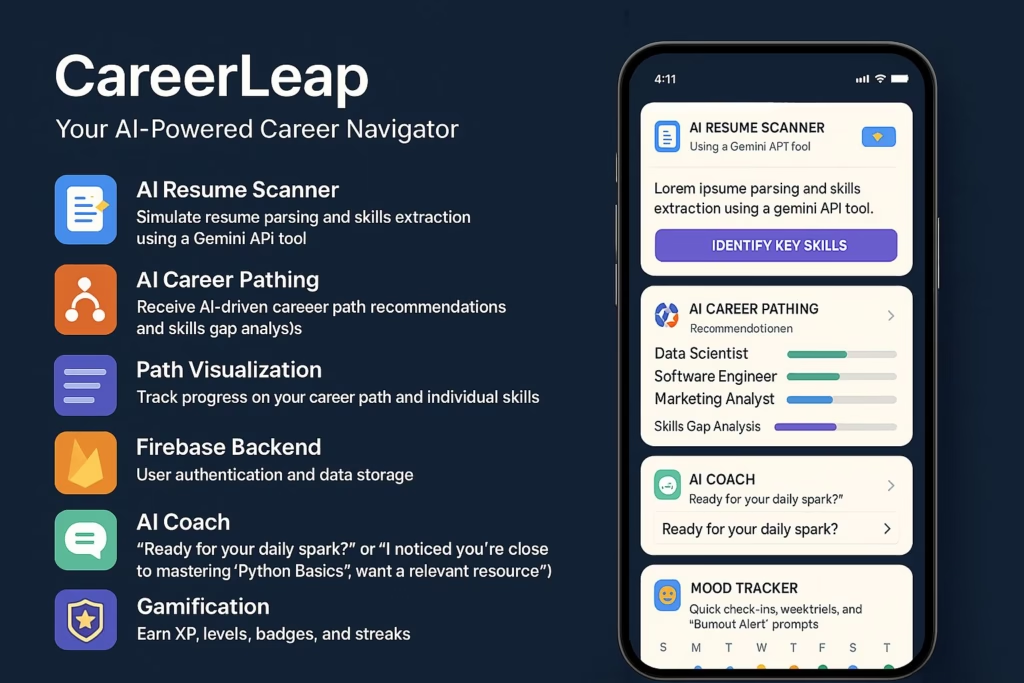The Amazonian Odyssey: Navigating the Vast Landscape of Amazon Careers

Amazon. The word itself evokes a universe of commerce, technology, and relentless innovation. From its humble beginnings as an online bookseller, it has burgeoned into a global behemoth, a dominant force in e-commerce, cloud computing (Amazon Web Services – AWS), artificial intelligence, digital streaming, and a bewildering array of other ventures. For ambitious professionals and aspiring talents across the globe, “Amazon Careers” represents more than just job listings; it’s a gateway to unparalleled scale, complex challenges, and the opportunity to shape the future. But what does it truly mean to embark on a career within this sprawling empire? It’s an odyssey into a unique culture, demanding expectations, and potentially transformative professional growth.
The Irresistible Gravitational Pull: Why Millions Seek an Amazon Career
The allure of working at Amazon is potent and multifaceted, drawing in a diverse pool of talent eager to make their mark.
- Unmatched Scale and Tangible Impact:
Few organizations on Earth operate with the sheer breadth and depth of Amazon. Whether you’re a software development engineer crafting code that powers transactions for hundreds of millions of customers, an operations manager overseeing the intricate ballet of a fulfillment center processing millions of packages, a marketer launching a campaign for a globally recognized product, or an AWS solutions architect enabling startups and enterprises to scale their digital infrastructure, your work has the potential for immediate and far-reaching impact. The ability to point to a service, a feature, or a system and know you played a role in its creation or operation for a massive global audience is a powerful motivator. This isn’t just about big numbers; it’s about contributing to systems and services that are deeply integrated into the daily lives of people and businesses worldwide. - A Crucible of Relentless Innovation:
Amazon’s ethos is built upon a “Day 1” mentality – a constant reminder to approach every day with the energy, an inventive spirit, and customer obsession of a startup, no matter how large the company becomes. This philosophy permeates the culture, encouraging employees to challenge the status quo, experiment, and “Invent and Simplify” – one of its core Leadership Principles. From the pioneering 1-Click ordering and customer reviews that redefined e-commerce, to the Kindle that revolutionized reading, the Echo and Alexa that brought voice computing into homes, and AWS that democratized access to enterprise-grade computing power, Amazon has a storied history of groundbreaking innovation. Employees are often encouraged to think big, take calculated risks, and learn from both successes and failures, fostering an environment where creative problem-solving is not just valued but expected. - A Universe of Diverse Opportunities:
The sheer scope of Amazon’s businesses translates into an extraordinary range of career paths. While tech roles, particularly Software Development Engineers (SDEs), Data Scientists, and AWS specialists, are highly prominent, the opportunities extend far beyond. Consider the spectrum:- Retail & E-commerce: Buyers, merchandisers, supply chain analysts, marketing specialists, brand managers.
- AWS: Solutions architects, technical account managers, sales and business development, cloud support engineers, product marketers.
- Devices & Services: Hardware engineers, embedded software developers, UX designers for Alexa, Kindle, Fire TV, and emerging tech like Astro and Kuiper.
- Operations & Logistics: Area managers, operations managers, process engineers, safety specialists, transportation and logistics planners, and the vast network of fulfillment and delivery associates.
- Entertainment: Content acquisition for Prime Video, production roles at Amazon Studios, marketing for music and games.
- Advertising: Account executives, ad operations, product managers for advertising technologies.
- Corporate Functions: Finance analysts, HR business partners, recruiters, legal counsel, public relations, economists, research scientists.
This diversity means individuals can often find niches that align with their specific skills and passions, and even pivot internally to explore different facets of the business.
- Accelerated Learning and Career Trajectory:
The dynamic, fast-paced, and often ambiguous environment at Amazon is a powerful catalyst for learning. Employees are constantly challenged with new problems, exposed to cutting-edge technologies, and given significant ownership early in their careers. Amazon also makes formal investments in employee development. Programs like Amazon Career Choice are a testament to this, offering to pre-pay 95% of tuition for employees to pursue courses in high-demand fields, even if those fields aren’t directly related to their current role or even Amazon’s future. Internal mobility is actively encouraged, with a vast internal job board allowing employees to seek new challenges and roles across different teams and geographies. For high performers, the potential for rapid career progression can be significant. - Competitive Compensation and Prestigious Branding:
While not the sole driver, Amazon’s compensation packages, which often include a base salary, sign-on bonuses, and Restricted Stock Units (RSUs) that vest over time, are competitive, particularly in tech and senior roles. Beyond the financial, having “Amazon” on one’s resume carries considerable weight in the job market, signaling an ability to thrive in a demanding, innovative, and results-oriented environment.
The Cultural Compass: Understanding Amazon’s 16 Leadership Principles
To truly comprehend Amazon Careers, one must understand its 16 Leadership Principles (LPs). These are not mere corporate platitudes; they are the bedrock of the company’s culture, rigorously applied in hiring, performance reviews, project discussions, and everyday decision-making. Aspiring Amazonians must not only know them but be able to demonstrate them through concrete past experiences. Key LPs include:
- Customer Obsession: Leaders start with the customer and work backwards. They work vigorously to earn and keep customer trust. Example: A product manager might spend weeks analyzing customer feedback and usage data before proposing a new feature, always asking, “How does this benefit the customer?”
- Ownership: Leaders are owners. They think long term and don’t sacrifice long-term value for short-term results. They act on behalf of the entire company, beyond just their own team. Example: An engineer might identify a systemic issue outside their direct responsibility and take the initiative to investigate and propose a solution because it impacts the broader customer experience.
- Invent and Simplify: Leaders expect and require innovation and invention from their teams and always find ways to simplify. They are externally aware, look for new ideas from everywhere, and are not limited by “not invented here.” Example: An operations manager might devise a new, simpler workflow for package sorting that reduces errors and improves speed, even if it means overhauling an established process.
- Are Right, A Lot: Leaders are right a lot. They have strong judgment and good instincts. They seek diverse perspectives and work to disconfirm their beliefs. This doesn’t mean always being correct initially, but rather having a strong decision-making process, using data, and being willing to be challenged and change course when new information emerges.
- Learn and Be Curious: Leaders are never done learning and always seek to improve themselves. They are curious about new possibilities and act to explore them. Example: A marketing specialist might proactively take courses on emerging AI tools to understand how they can be applied to campaign optimization.
- Hire and Develop the Best: Leaders raise the performance bar with every hire and promotion. They recognize exceptional talent and willingly coach them. They are serious about their role in developing leaders.
- Insist on the Highest Standards: Leaders have relentlessly high standards — many people may think these standards are unreasonably high. Leaders are continually raising the bar and driving their teams to deliver high-quality products, services, and processes.
- Think Big: Thinking small is a self-fulfilling prophecy. Leaders create and communicate a bold direction that inspires results. They think differently and look around corners for ways to serve customers.
- Bias for Action: Speed matters in business. Many decisions and actions are reversible and do not need extensive study. We value calculated risk-taking. Example: Instead of endless deliberation, a team might launch a small-scale pilot of a new service to gather real-world data quickly.
- Frugality: Accomplish more with less. Constraints breed resourcefulness, self-sufficiency, and invention. There are no extra points for growing headcount, budget size, or fixed expense. This is famously seen in Amazon’s “door desks” in its early days and continues to influence resource allocation.
- Earn Trust: Leaders listen attentively, speak candidly, and treat others respectfully. They are vocally self-critical, even when doing so is awkward or embarrassing.
- Dive Deep: Leaders operate at all levels, stay connected to the details, audit frequently, and are skeptical when metrics and anecdote differ. No task is beneath them. Example: A senior manager might personally review customer service call transcripts or trace a technical bug through code to understand a problem at its root.
- Have Backbone; Disagree and Commit: Leaders are obligated to respectfully challenge decisions when they disagree, even when doing so is uncomfortable or exhausting. Leaders have conviction and are tenacious. They do not compromise for the sake of social cohesion. Once a decision is determined, they commit wholly.
- Deliver Results: Leaders focus on the key inputs for their business and deliver them with the right quality and in a timely fashion. Despite setbacks, they rise to the occasion and never settle.
- Strive to be Earth’s Best Employer: Leaders work every day to create a safer, more productive, higher performing, more diverse, and more just work environment.
- Success and Scale Bring Broad Responsibility: We are big, we impact the world, and we are far from perfect. We must be humble and thoughtful about even the secondary effects of our actions.
These principles are woven into the fabric of the interview process, particularly through behavioral questions requiring candidates to use the STAR method (Situation, Task, Action, Result) to provide specific examples of how they’ve embodied these principles.
Navigating the Gauntlet: The Amazon Hiring Process Unpacked
Securing a role at Amazon is a rigorous undertaking, renowned for its thoroughness and data-driven approach. While specifics vary by role and level, a typical journey involves several stages:
- Online Application & Resume Screening: Your resume is your first impression. It’s crucial to tailor it to the specific role, highlighting quantifiable achievements and keywords relevant to the job description and Amazon’s LPs. Amazon, like many large companies, uses Applicant Tracking Systems (ATS), so formatting and keyword optimization are key.
- Online Assessments: Depending on the role, candidates may face a battery of online tests.
- SDEs: Coding challenges (on platforms like HackerRank or Codility), system design questions.
- Operations/Management: Situational judgment tests, personality assessments (evaluating work styles and LP alignment).
- Writing Roles: Writing sample submissions or timed writing tests.
- Data-focused roles: SQL queries, data interpretation tasks.
- Recruiter Phone Screen: An initial conversation (30-45 minutes) with a recruiter to discuss your background, interest in Amazon, salary expectations, and to assess basic fit and LP alignment.
- Hiring Manager Phone Screen/Technical Screen: A more in-depth call (45-60 minutes) with the hiring manager or a senior team member. This will delve deeper into your technical skills (if applicable) and more specific behavioral examples related to the LPs.
- The “Loop” Interview: This is the most intensive part of the process. It typically consists of 4-6 back-to-back interviews (often 45-60 minutes each), usually conducted virtually now. Each interviewer will focus on different LPs and technical/functional competencies.
- The Bar Raiser: A critical component of the Loop is the “Bar Raiser.” This is an experienced Amazonian interviewer from a different team, trained to be an objective third party. Their primary role is to ensure that every hire raises the overall talent bar at Amazon. They have veto power and are particularly focused on long-term potential and LP alignment.
- Behavioral Questions (STAR Method): Expect a barrage of questions like, “Tell me about a time you failed,” “Describe a situation where you had to make a decision with incomplete data,” “Give an example of when you went above and beyond for a customer.” Your answers should be structured using the STAR method:
- Situation: Briefly set the context.
- Task: Describe your responsibility or the problem you faced.
- Action: Detail the specific steps you took. Use “I,” not “we.”
- Result: Explain the outcome, quantifying it whenever possible, and what you learned.
- Technical Deep Dives: For technical roles, expect coding problems on a shared editor or whiteboard, system design discussions, and problem-solving exercises.
- “Why Amazon?” and Your Questions: You’ll also be asked about your motivations and will have an opportunity to ask insightful questions, demonstrating your curiosity and engagement.
- Written Exercises/Presentations (Role-Dependent): Some roles, particularly in product management, marketing, or senior leadership, may require a written exercise (e.g., a 6-pager document outlining a strategy) or a presentation.
- The Debrief & Hiring Decision: After the Loop, all interviewers (including the Bar Raiser) convene for a “debrief” session. They share their feedback, assess the candidate against the LPs and role requirements, and collectively make a hiring decision. This data-driven, consensus-oriented approach is designed to minimize individual bias.
Preparation is paramount: thoroughly research Amazon, the specific role, and the LPs. Practice your STAR stories. For technical roles, grind LeetCode/Cracking the Coding Interview. Conduct mock interviews.
A Panorama of Career Paths: Finding Your Niche
Amazon’s vast ecosystem offers a dizzying array of career trajectories:
- Software Development & Engineering (SDE): The lifeblood of Amazon’s tech. SDEs work on everything from e-commerce platforms and AWS services to Alexa AI and robotics. Roles span front-end, back-end, full-stack, mobile, machine learning, data engineering, and more. Career progression often follows SDE I, SDE II, SDE III, Principal SDE, and Distinguished Engineer paths.
- AWS (Amazon Web Services): A company within a company, AWS offers roles for Solutions Architects (designing cloud solutions for customers), Technical Account Managers (providing ongoing technical guidance), Sales & Business Development, Cloud Support Engineers, and specialists in areas like security, networking, Big Data, and Machine Learning.
- Product Management: Product Managers (PMs) at Amazon are often described as “mini-CEOs” of their product. They define the vision, strategy, and roadmap, working closely with engineering, design, marketing, and other stakeholders. Strong analytical skills, customer empathy, and the ability to write compelling narratives (often in the form of “PRFAQs” – Press Release/Frequently Asked Questions documents written before building) are key.
- Program Management: Program Managers (PgMs) or Technical Program Managers (TPMs) orchestrate complex, cross-functional projects, ensuring they are delivered on time and within scope. They excel at stakeholder management, risk mitigation, and process optimization.
- Operations & Logistics: The physical heart of Amazon’s retail business. Roles range from Area Managers leading teams in fulfillment centers to Operations Managers overseeing entire sites, Process Engineers optimizing workflows, Supply Chain Planners, and Logistics Coordinators. These roles are demanding, data-intensive, and crucial for customer satisfaction.
- Marketing & Sales: From digital marketing specialists driving traffic and conversions to brand managers shaping product perception, and AWS sales teams closing enterprise deals, these roles require creativity, analytical prowess, and strong communication skills.
- UX/UI Design & Research: Creating intuitive and engaging experiences for Amazon’s myriad digital products and services. Researchers delve into user needs, while designers translate those into compelling interfaces.
- Finance & Business Analytics: Supporting strategic decision-making through financial planning, analysis, reporting, and data-driven insights across all business units.
- Human Resources: From recruiting top talent (a massive operation in itself) to HR Business Partners supporting teams, learning and development specialists, and compensation analysts.
- Internships & Early Career Programs: Amazon offers robust internship programs for students (SDE, PM, Finance, Operations, etc.) and rotational programs for recent graduates, providing invaluable experience and a potential pathway to full-time employment.
The Amazonian Experience: Rewards, Realities, and Rigors
Working at Amazon is often described as an intense, challenging, yet deeply rewarding experience.
- The Pace and “Peculiar” Culture: The “Day 1” mentality means a constant state of evolution and urgency. Ambiguity is common, and employees are expected to be self-starters who can navigate uncertainty and “Dive Deep” to find solutions. The culture can feel “peculiar” (a term Amazon itself uses) – highly data-driven, with a strong emphasis on written communication (the famous 6-pager narratives replacing PowerPoint presentations in many meetings) and direct feedback.
- Work-Life Balance: This is a frequently discussed topic. The reality is that work-life balance can vary significantly depending on the team, role, and project cycle. Peak seasons (like Q4 for retail) can be particularly demanding. While Amazon has initiatives to support employee well-being, the expectation of high performance and delivering results can lead to long hours for many.
- Data-Driven Performance and PIPs: Amazon is a highly metrics-oriented company. Performance is regularly assessed, and underperformance can lead to a Performance Improvement Plan (PIP). While designed to help employees get back on track, PIPs are a serious matter and a known aspect of the culture.
- Immense Rewards:
- Compensation: Beyond base salary, RSUs can form a significant portion of total compensation, especially for long-tenured employees and those in high-demand tech roles. Sign-on bonuses are also common.
- Benefits: Comprehensive health, dental, and vision insurance, parental leave, 401(k) matching, employee discounts, and programs like Career Choice.
- Unparalleled Skill Development: The sheer complexity of the problems you’ll solve and the caliber of colleagues you’ll work with contribute to rapid skill acquisition.
- Career Trajectory: For those who thrive, opportunities for advancement and increased responsibility can come quickly. The Amazon name on a resume is also a significant career asset.
- Making an Impact: The ability to contribute to products and services used by millions, or even billions, is a unique and powerful motivator.
Preparing for Your Amazon Journey: Beyond the Application
If an Amazon career is your goal, dedicated preparation is non-negotiable:
- Deep Self-Assessment: Honestly evaluate if your work style, values, and resilience align with Amazon’s demanding culture and LPs.
- Thorough Research: Go beyond the job description. Understand the specific team, its products/services, recent news, and how the LPs manifest in that area.
- Network Strategically: Connect with current or former Amazonians on LinkedIn for informational insights (not to ask for a job directly). Attend recruiting events if possible.
- Master Your Narrative (Resume & STAR Stories): Quantify your achievements. Prepare numerous STAR examples for each LP, tailored to different scenarios.
- Sharpen Technical Skills: For SDEs, this means consistent practice with coding problems (algorithms, data structures, system design). For other roles, brush up on relevant analytical or domain-specific skills.
- Mock Interviews are Crucial: Practice with peers, mentors, or professional coaches to refine your STAR delivery, technical explanations, and ability to think on your feet.
Thriving Beyond the Offer: Continuous Growth in the Ecosystem
Securing an offer is just the beginning. To thrive at Amazon:
- Embrace Continuous Learning: The landscape is always changing. Be proactive in acquiring new skills and knowledge.
- Seek and Act on Feedback: The culture values directness. View feedback as a gift for growth.
- Build Strong Relationships: Networking internally is vital for collaboration and future opportunities.
- Take Proactive Ownership: Don’t wait to be told what to do. Identify problems and opportunities and take initiative.
- Understand Internal Systems: Learn Amazon’s internal tools, processes, and communication norms quickly.
Is an Amazon Career Your Next Chapter?
An Amazon career is not for the faint of heart. It demands intellectual rigor, resilience, a profound customer focus, and an unwavering commitment to high standards. It’s a challenging environment that pushes individuals to their limits. However, for those who are energized by such challenges, who seek to innovate at scale, and who are driven to deliver impactful results, Amazon offers an unparalleled platform for professional growth and the chance to be part of something truly transformative. It’s an odyssey that, for the right individual, can redefine their career and their capacity to achieve. The question isn’t just whether you can get a job at Amazon, but whether its unique, demanding, and rewarding ecosystem is the right place for you to build your future.
- The Path Less Traveled: Entering Apple Careers as a Career Changer or Mature Professional
- Making the Career Leap: How to Transition Between Roles and Teams at Microsoft
- Navigating the Hybrid Workplace: How Microsoft is Defining the Future of Work
- Cracking the Code: A Deep Dive into Microsoft Technical Interview for Software Engineers
- From Conflict to Collaboration: Demonstrating Influence in Cross-Functional Roles at Meta
FAQ
What are the main reasons people want to work at Amazon?
People are drawn to Amazon careers for several key reasons: the opportunity to work at an immense scale and have a tangible impact on millions of customers; being part of a culture that prioritizes relentless innovation (the “Day 1” mentality); the vast diversity of job roles available across tech, operations, corporate, and creative fields; and the potential for significant learning, career growth, and competitive compensation.
How important are Amazon’s Leadership Principles if I want to work there?
Extremely important. Amazon’s 16 Leadership Principles (LPs) are the bedrock of its culture. They are not just suggestions but are deeply integrated into the hiring process, performance reviews, and daily decision-making. Understanding these principles (like Customer Obsession, Ownership, Invent and Simplify) and being able to provide specific examples of how you’ve demonstrated them in your past experiences is crucial for a successful application and interview.
What types of careers are available at Amazon beyond just tech and warehouse jobs?
While tech roles (like Software Development Engineers) and fulfillment center positions are well-known, Amazon offers a much broader spectrum of careers. These include roles in product management, program management, marketing, finance, human resources, legal, UX/UI design, content creation (for Prime Video, Amazon Studios), sales (especially for AWS), business analytics, research science, and many specialized fields within its diverse business units.
What is the Amazon hiring process generally like?
The Amazon hiring process is known for being rigorous and competitive. It typically involves an online application, potentially online assessments (coding tests, situational judgment tests), one or more phone screens with recruiters and hiring managers, and then a series of “loop” interviews. The loop consists of several back-to-back interviews where different interviewers assess your skills and alignment with the Leadership Principles, often using behavioral questions that require STAR method answers. A key figure in the loop is the “Bar Raiser,” an objective interviewer from outside the hiring team.
What is the work culture like at Amazon, and is it for everyone?
Amazon’s culture is often described as “peculiar” – fast-paced, data-driven, and demanding, with a strong emphasis on its Leadership Principles and a “Day 1” innovative mindset. While it offers incredible opportunities for impact and growth, the intensity and high expectations mean it may not be the right fit for everyone. Employees are expected to take ownership, “Dive Deep” into problems, and deliver results. Work-life balance can vary depending on the role and team.




